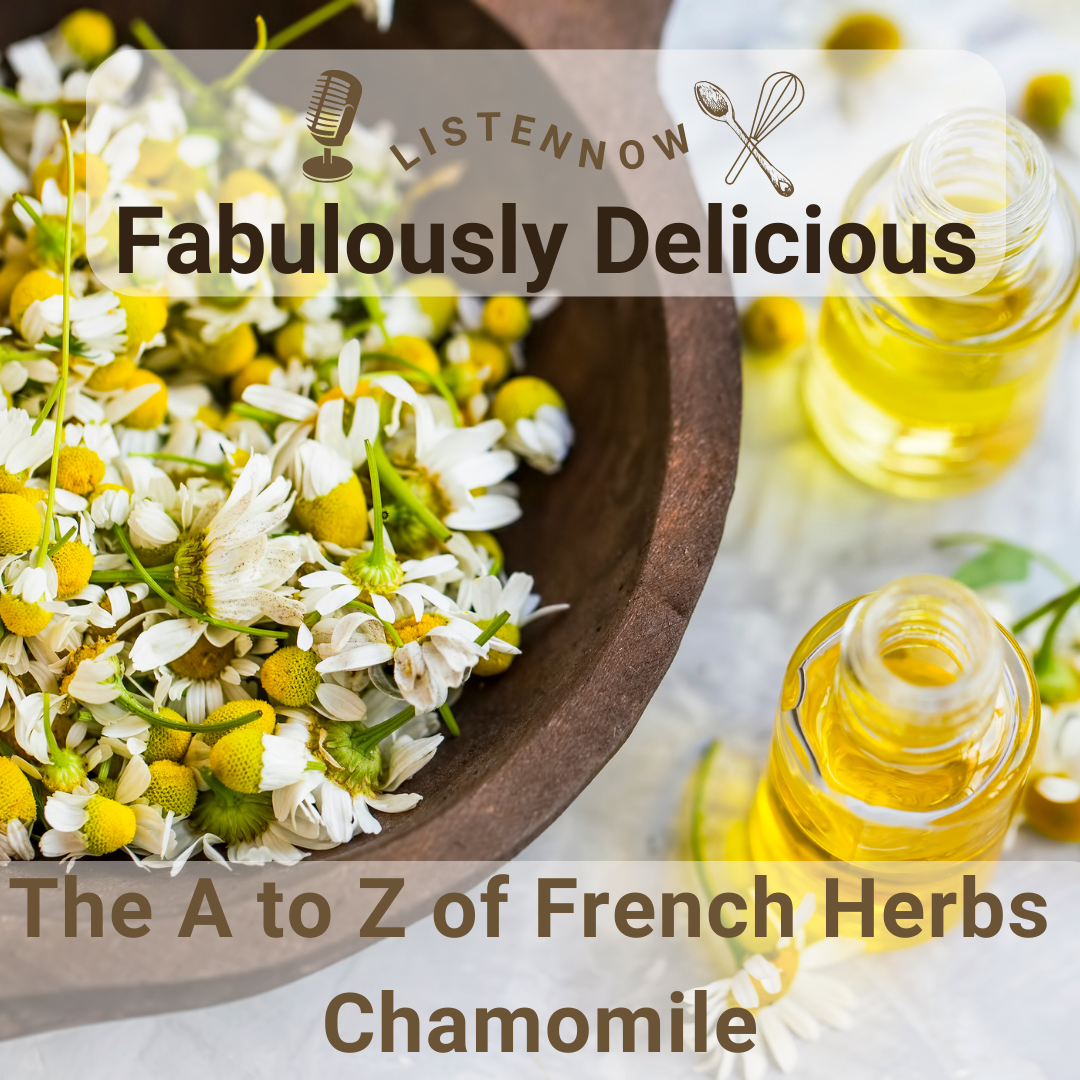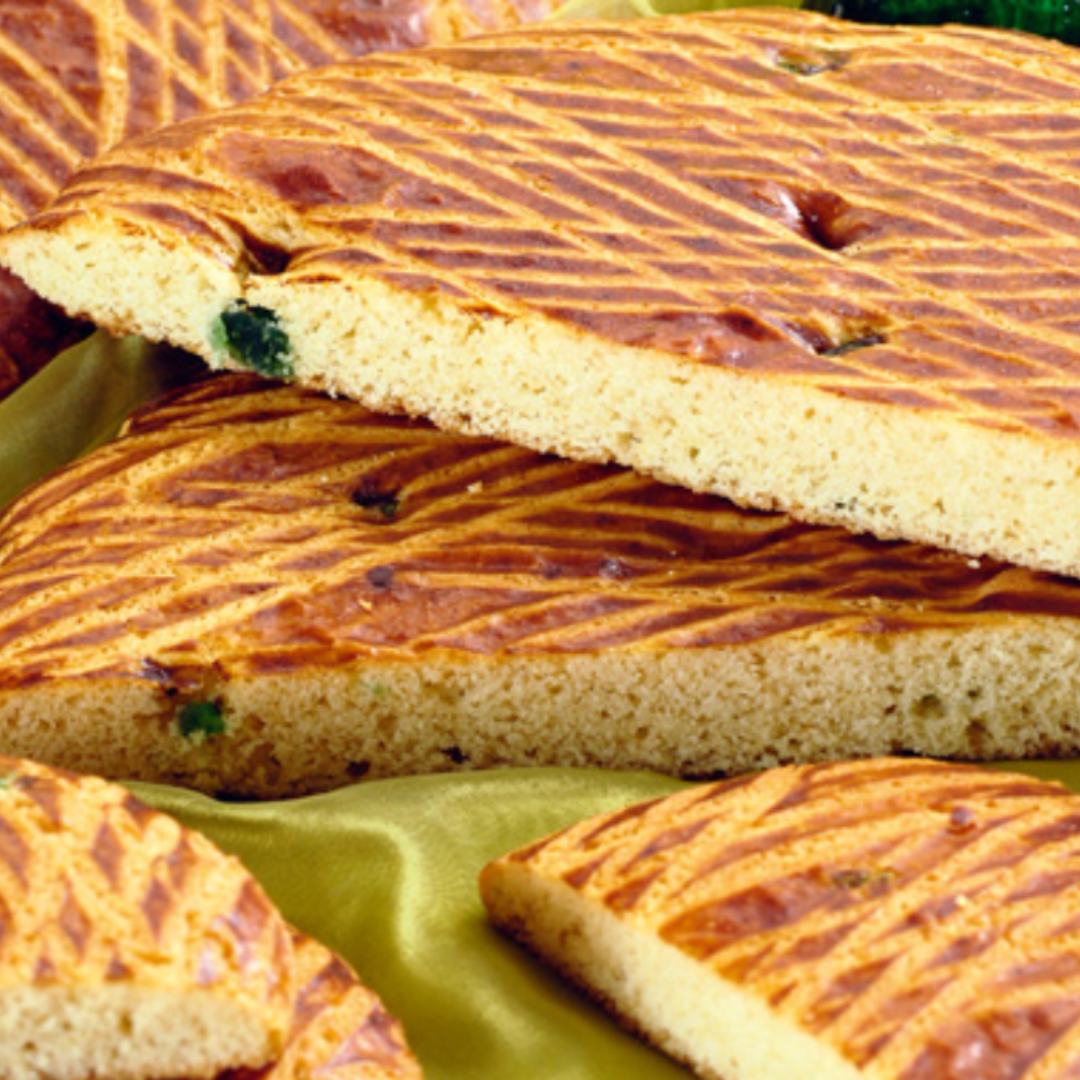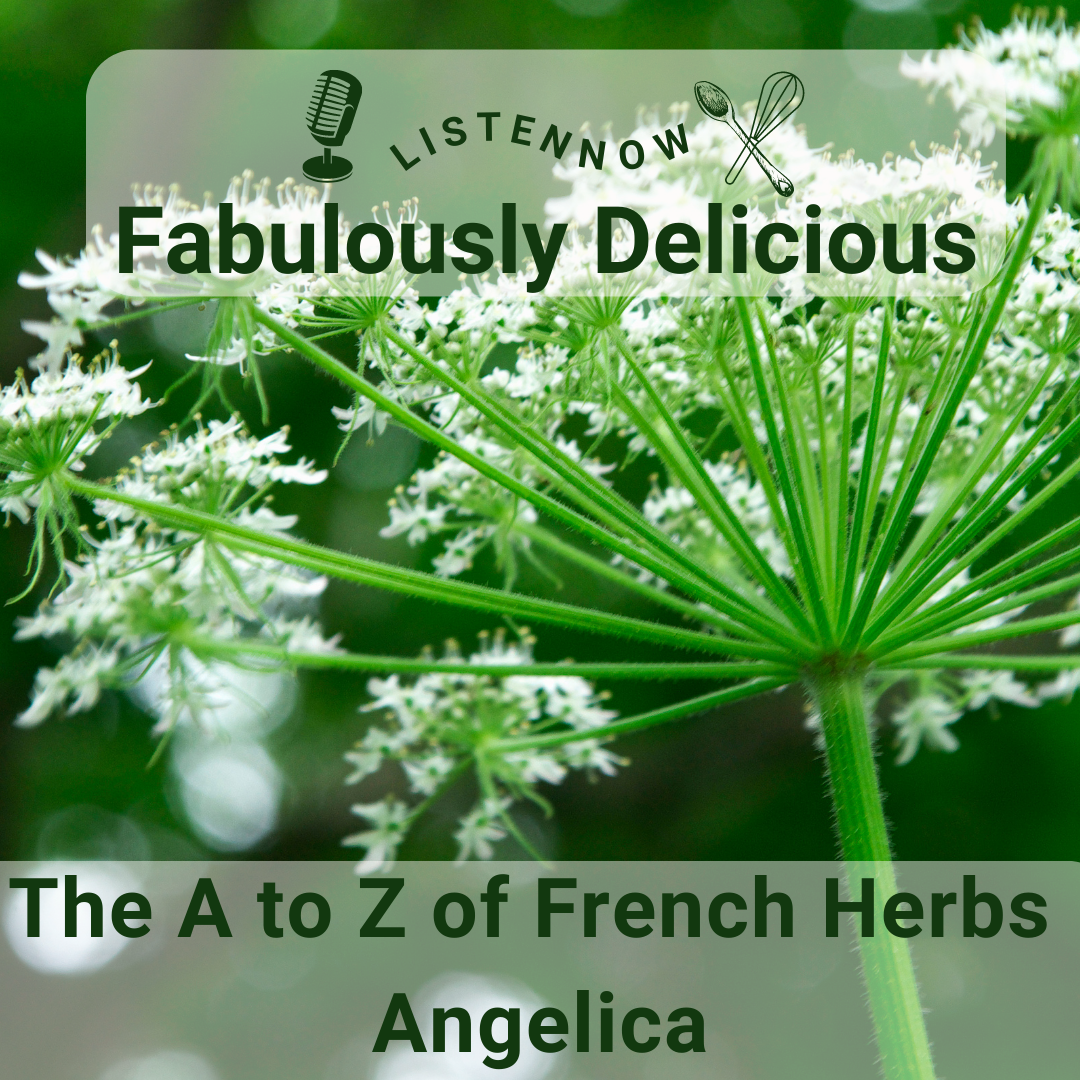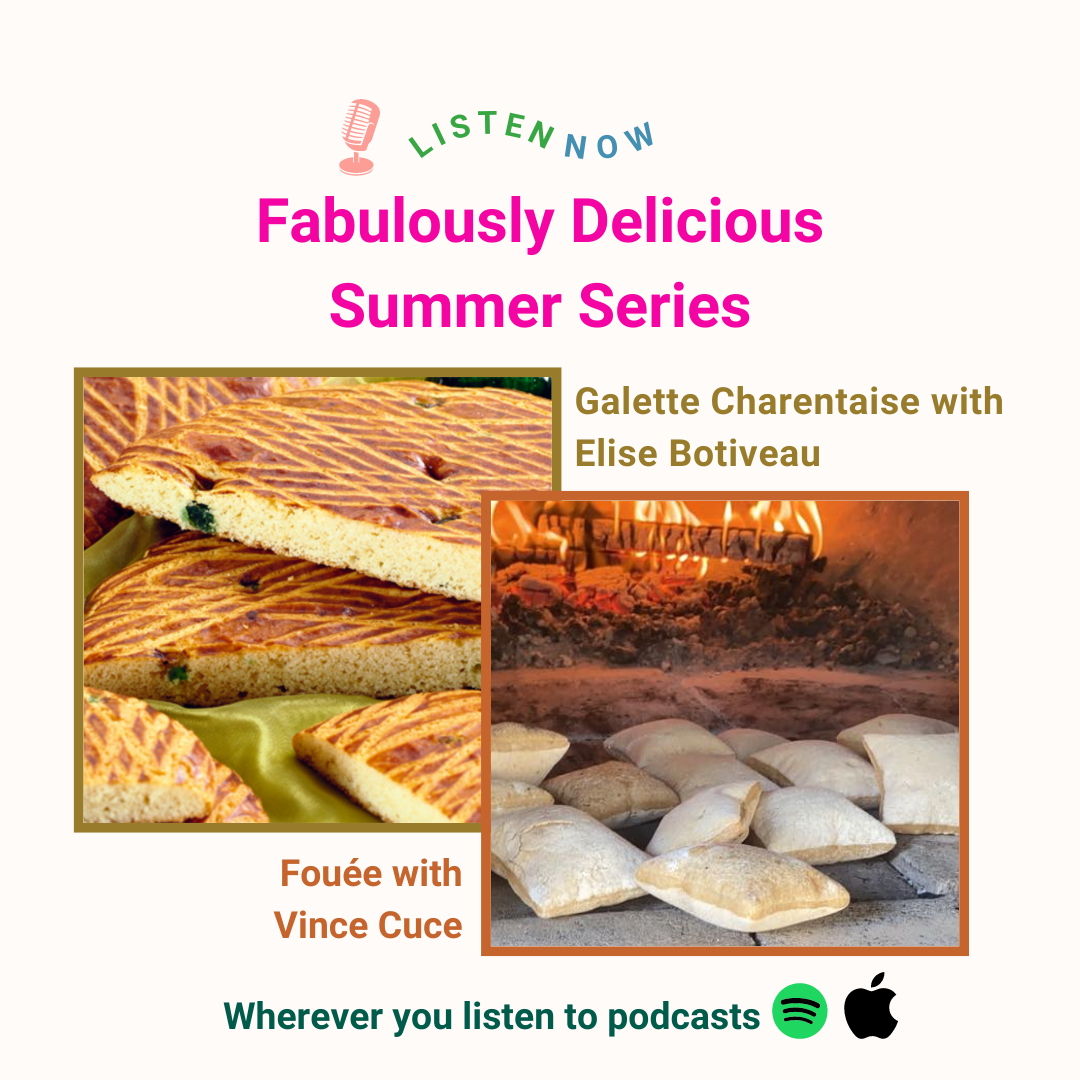French Recipes, Podcast Episodes and France Travel Tips!

A to Z of French Herbs - Chamomile
Chamomile is a flowering plant that belongs to the daisy family. The plant has small white flowers with yellow centers, and it's known for its distinctive scent and taste. Chamomile has a long history of medicinal use, but it's also used in cooking in many parts of the world.
There is two common species of Chamomile one is often called German Chamomile or Water of Youth and the other is Roman, English or garden chamomile. The later is often used to create a chamomile lawn.
A chamomile lawn is a type of lawn made up of chamomile plants instead of grass. The lawn is created by planting chamomile plugs or seeds in a prepared area of soil, which is then regularly watered and maintained. One such lawn was feature in Mary Wesley’s 1984 novel, funnily enough called The Camomile Lawn which feature a house in Cornwall UK with a lawn planted with chamomile rather than grass.

Malbec Wines
Happy World Malbec Wine Day everyone! Today, we celebrate one of the most beloved wines in the world, the Malbec.
Most of us might think that Malbec is a grape variety from Argentina, but did you know that this grape originally came from France? In fact, Malbec was one of the most important grapes in Bordeaux in the 19th century, until it fell out of favor due to its susceptibility to disease and the difficulty in ripening it in the cool Bordeaux climate. However, the grape found a new home in the high-altitude vineyards of Mendoza, Argentina, where it thrived and became one of the country's signature wines.
But let's not forget that France still produces some of the best Malbec wines in the world. The grape is still grown in Cahors, a small town in the southwestern region of France, where it is known as the "black wine" because of its deep color. The wines from Cahors are typically fuller-bodied and more tannic than their Argentine counterparts, with flavors of blackberry, plum, and spice.

A to Z of French Herbs - Bay Leaves
One of or possibly the most important herbs in French cooking. It could be said is the bay leaf. It's essential in many French dishes, stocks, and of course the bouquet garni. So what is a bay leaf?
In France, bay leaves are known as Feuilles de Laurier. Feuilles means leaves in French. They are part of the evergreen family of trees. Laurel bay trees are actually related to the cinnamon family.
They're said to facilitate digestion, reduce bloating and flatulence, and also are good for infections, sprains, muscle pain, joint pain, rheumatism, relieving colds and flu and lowering blood pressure, fighting stress and anxiety.

Pistou Soup Recipe
Pistou Soup is a vegetable and noodle soup from the Provence region and the Cote d’Azur. It’s made with noodles (vermicelli or angle hair pasta), beans, onions, potatoes, tomatoes and sometimes smoked ham. This soup at the table is usually served alongside of some Pistou to place in yourselves.
So now that you have the Pistou recipe you need to make some Pistou soup.
I didn’t have vermicelli or angle hair pasta for this recipe when I made it so I just used what pasta I had left in the cupboard also it’s not the season for green beans so I used zucchini instead. You can do the same as well.
My favourite recipe for Pistou is as follows.

Pistou Recipe
Possibly the most famous dish in French cuisine that has Basil as its main ingredient is Pistou which is the French version of the Italian Pesto. Pistou is a similar sauce to Pesto in ingredients and the way it’s made but there are two main differences. The first is that there is no pine nuts in Pistou and the other is that sometimes they use Gruyere cheese instead of Parmesan cheese.
Pesto and Pistou the names come from the Latin word Pestare which means, to crush. Pistou is mainly found in the southern region of France. It’s considered by locals to be a Provencal or Nicoise creation. This makes a lot of sense as Nice was for hundreds of years an Italian city. Nice only became part of France around 150 years ago.
My favourite recipe for Pistou is as follows.

Candied Angelica
One of the most popular commercial uses of Angelica and cooking is to confiture Angelica to be used as a confectionery. This process consists of cutting the stems of the Angelica and then peeling them before they are then lacerated in the syrup.
Doing this on more than one occasion increasingly super concentrates it, so that the water naturally in the stems is replaced through these baths in an osmosis effect with the syrup.
The candied strips are then dried at a low temperature to obtain a green candied stem. That has a smooth texture and a delicious fragrance. This candied Angelica has a unique, subtle citrus flavor.
If you have any homegrown Angelica stems and you want to make your own candied Angelica sticks, here's a recipe for you.

A to Z of French Herbs - Basil
Basil isn't always thought of as a French herb, but it certainly has its place in French cuisine, especially the cuisine of the Mediterranean or Provence area.
Basil in French is pronounced Basilic. One variety of basil sold in France is actually called French Basil, but it’s known to many people around the world as Thai basil or sweet basil.
French basil belongs to the lamiaceae family or mint family of herbs and is known to many as St. Joseph's wort. It's also Known to French chefs as the king of herbs or herbs royal, the Royale herb.
The herb royal name is probably one of the most popular names for basil in France. But the name basil actually comes from the latin Basileus or the Greek βασιλικόν φυτόν (basilikón phutón), meaning Royal. It said that the Princesses of Byzantium gave it its name for its beauty and its fragrance.

Galette Charentaise Recipe
The most popular dish in France probably to make with candied Angelica is the Galette Charentaise. It's a really easy cake to make. Despite the name, it's a cake, not a galette.
What is a Galette Charentaise? It’s a cake but it’s a biscuit as well. Traditionally it's round and measures around 25 centimeters and is a very simple recipe, but it's very, very local. You can find the galette Charentaise almost entirely on the west coast of France.
Here’s a recipe taught to me by Elise Botiveau for a Galette Charentaise.

A to Z of French Herbs - Angelica
Angelica is considered a vegetable rather than a herb in some countries in Europe. But in France, it's considered to be a herb. It's used in a variety of ways. The candied Angelica is probably the most well-known and used.
In the first season of my podcast Fabulously Delicious The French Food podcast I spoke with Elise Botiveau about the Galette Charentaise, which is a cake that Elise grew up making. This cake or gateau as they like to call them here in France and has a special ingredient, Angelica, candied Angelica to be exact. So what is Angelica
Angelica is an aromatic herb that grows one to two meters high, sometimes even higher. Its leaves have hairs on the underside and the plant has white or greenish flowers depending on the variety. It tastes a bit like celery. In Finland actually, where it's treated like a vegetable. The stems are often eaten raw like celery. Stems can also be added to an assortment of other vegetables being roasted or as a herb in salads and soups.

A to Z of French Herbs - Absinthe
Absinthe the herb not the drink, otherwise known as wormwood. It's not just something used to make spirits. It's also an ingredient used for medicinal purposes, as well as cooking.
Absinthe is not just a drink that we talked about. In my episode of Fabulously Delicious with Forrest Collins from 52 martinis. But absinthe is also a herb, which can often be called Wormwood, Grande Wormwood, Absinthium, Mugwort, Wemout, Wermud, Wormit or Wormod.
Absinthe or Wormwood grows in North Africa and regions of Eurasia as well as now Canada and North America.
Although it is used as an ingredient in the popular drink Absinthe and other spirits as well it is mostly used as an ornamental plant.

French Onion Soup
French Onion soup is a beloved dish that has a rich history and numerous variations. It is a classic soup that is made with caramelized onions, beef broth, and bread, and is usually topped with melted cheese. While its origins are unclear, it is believed to have originated in France and has since become a popular dish worldwide.
The history of French Onion soup dates back centuries. Some believe it originated in ancient Rome, where a similar soup made with onions was popular among the working class. Others suggest that the soup was first created in the 18th century by French farmers who had access to plenty of onions and beef broth.
French Onion soup quickly gained popularity in France and became a staple of French cuisine. Over time, the soup has evolved, with various regions of France putting their own unique spin on the classic recipe. One popular variation is the Lyonnaise version, which is made with chicken broth and is topped with a crouton and poached egg. Another variation is the Provençal version, which is made with a mixture of beef and chicken broth and is topped with grated Parmesan cheese.

Cassoulet with Sylvie Bigar
Where is it from the cassoulet? Well, that's a really good question because depending on who you ask, you're gonna get a different answer. I mean, in general, I think everybody agrees that the cassoulet which you know we need maybe to stay exactly what is it?
International food and travel writer Sylvie Bigar was born in Geneva, Switzerland, and is based in New York City. She is fluent in French, English, and Italian. Sylvie co-authored Chef Daniel Boulud's definitive and personal cookbook, Daniel: My French Cuisine. Sylvie's many adventures have led her to explore the childhood home and native French province of Colette, her favorite author; the apple orchards of Ireland, the banks of the Oum Er-Rbia River in Morocco, the remote Swiss village of Mund with its seductive saffron, the Austro-Hungarian culinary revival in Prague, and Southwestern France on a long-time quest for the perfect cassoulet.
Today’s topic on Fabulously Delicious is all about the cassoulet and we will find out what’s in it, where’s it from, variations of and its origin story.

Languedoc Wines with Carrie Dykes
What is the largest region of wine-making in France? It actually produces more wine than the whole of the USA. It’s today’s topic the Languedoc wines.
Carrie Dykes is a freelance wine writer that has written articles for Medium, and Lonely Planet to name a couple of platforms. Carrie studied wine and specializes in European wines.
Today’s topic on Fabulously Delicious is all about the wines from the Languedoc region and we find out from Carrie what makes them so special.

Women of Champagne with Cynthia Coutu
The other thing that Cynthia Coutu learned at Wine School or realized was just how male-dominated the wine industry is in France. So that's why she ended up specializing in champagnes made by women.
Cynthia Coutu is a 50-something Canadian, living in Paris. She has three passions, people, wine, and travel. Learning about wine has opened up so many doors and windows for Cynthia. Now Cynthia shares her passion for Champagne with people from around the world on one of her fabulous tours.
Today’s topic on Fabulously Delicious is all about the women of Champagne. There’s a great history of women in the champagne industry here in France and in my opinion, it needs to be shared. But also there are currently a lot of fabulous women in the industry as well so that’s why I’ve devoted a whole episode to the subject.

Cognac with Thérèse Bertrand
So Cognac is definitely a spirit. Cognac falls into the category of brandy which is probably easier to understand. But not all brandy is cognac. So in order to be called cognac, it needs to be made from the AOC protected area.
Thérèse Bertrand as a child spent her childhood between Spain and France. She also spent her life with Cognac at the core to everything and despite some time away she has moved back to tackle the family business with her brother along with her husband and daughter.
Today’s topic on Fabulously Delicious is all about Cognac. We learn what Cognac is. What the region itself is like. How Cognac is made and so much more.

Cremé Caramel with Ruby Boukabou
What do a flan, flan mixto, quesillo, pudim, flan de café, rozata, flan de Cuba, purin, flan Napolitano and leche flan all have in common? In France they are all called a cremé caramel. Or are versions of one.
Ruby Boukabou is an Australian tap dancer, author of guidebooks on Paris’ architecture and art as well as the proud daughter of French restaurant owner parents.
Today’s topic on Fabulously Delicious is one that Ruby is pretty much an expert on. Ruby’s mum used to make these delicious dishes every night for her father's restaurant. Ruby has a special treat for us, her mum's recipe. Also, she fills us in on the history of this dish and what its origin story is.

Summer Series - Regional Specialities
In today's Fabulously Delicious episode we enjoy summer by revisiting season one and the fabulously topics we talked about. So this week its regional specialities of France with Galette Charentaise and the Fouée with Elise Botiveau and Vince Cucé.
Fabulously Delicious is all about French food and French cuisine the people that make it, cook it, taste it, write about it, photograph it, and love it. We chat with Franco foodies here in France and around the world.

Summer Series - French Wine
In today's Fabulously Delicious episode we enjoy summer by revisiting season one and the fabulously topics we talked about. So this week its Burgundy Wine and Nouveau Beaujolais with Preston Mohr and Romain Teyteau.
Fabulously Delicious is all about French food and French cuisine the people that make it, cook it, taste it, write about it, photograph it, and love it. We chat with Franco foodies here in France and around the world.

Summer Series - French Patisseries
In today's Fabulously Delicious episode we enjoy summer by revisiting season one and the fabulously topics we talked about. So this week its Macarons and Choux Pastry with Molly Wilkinson and Ann Mah.
Fabulously Delicious is all about French food and French cuisine the people that make it, cook it, taste it, write about it, photograph it, and love it. We chat with Franco foodies here in France and around the world.

Mont D’Or with Patrick Ambrosio
In today's Fabulously Delicious episode we chat with a cheesemonger in the US all about the wonderful French cheese Mont D'Or. Patrick Ambrosio was a musician who trained to become a chef and then a cheesemonger. Now he's the expert on all things cheese and specifically today Mont D'Or cheese.
Fabulously Delicious is all about French food and French cuisine the people that make it, cook it, taste it, write about it, photograph it, and love it. We chat with Franco foodies here in France and around the world.

